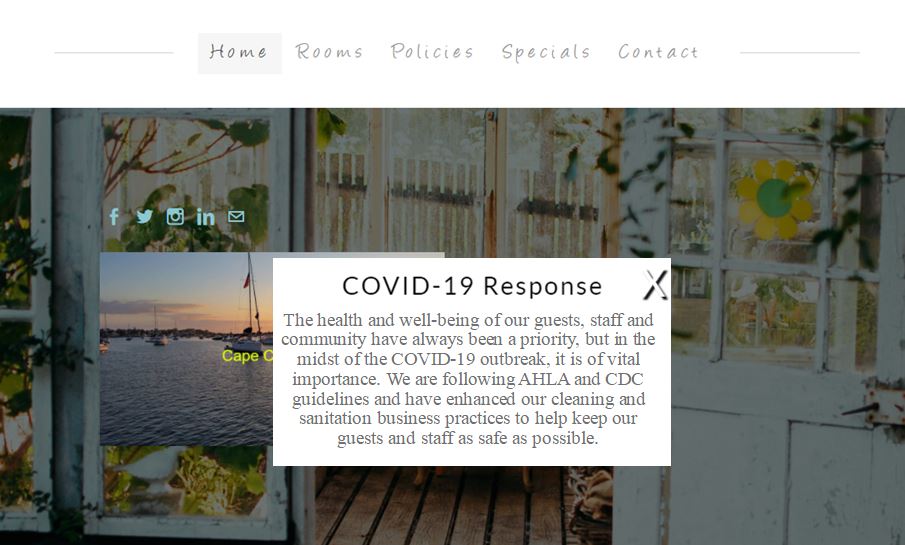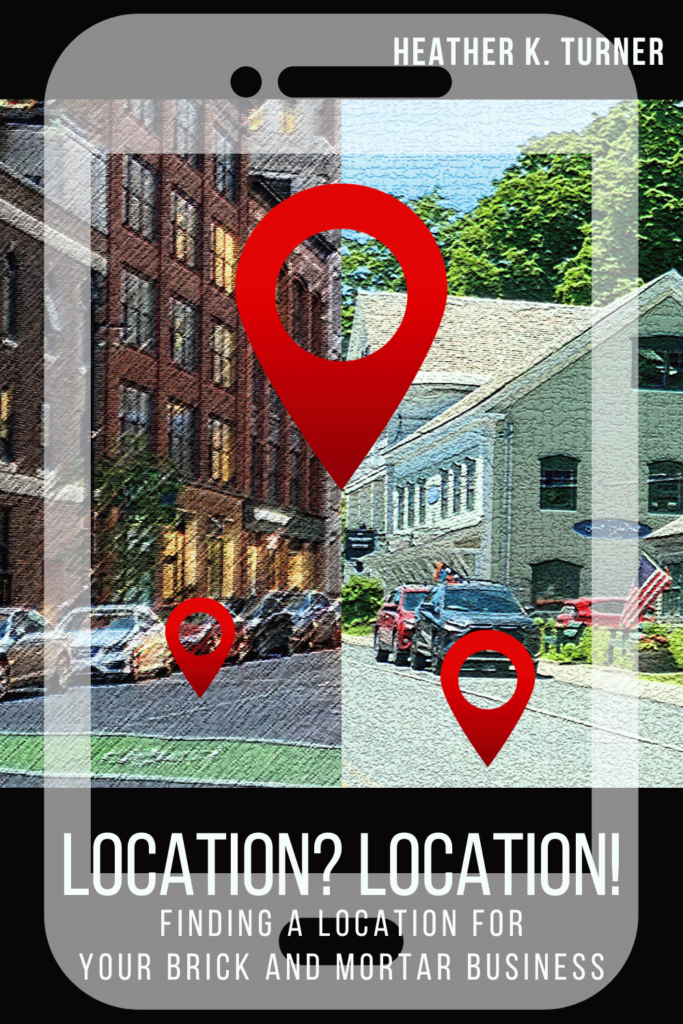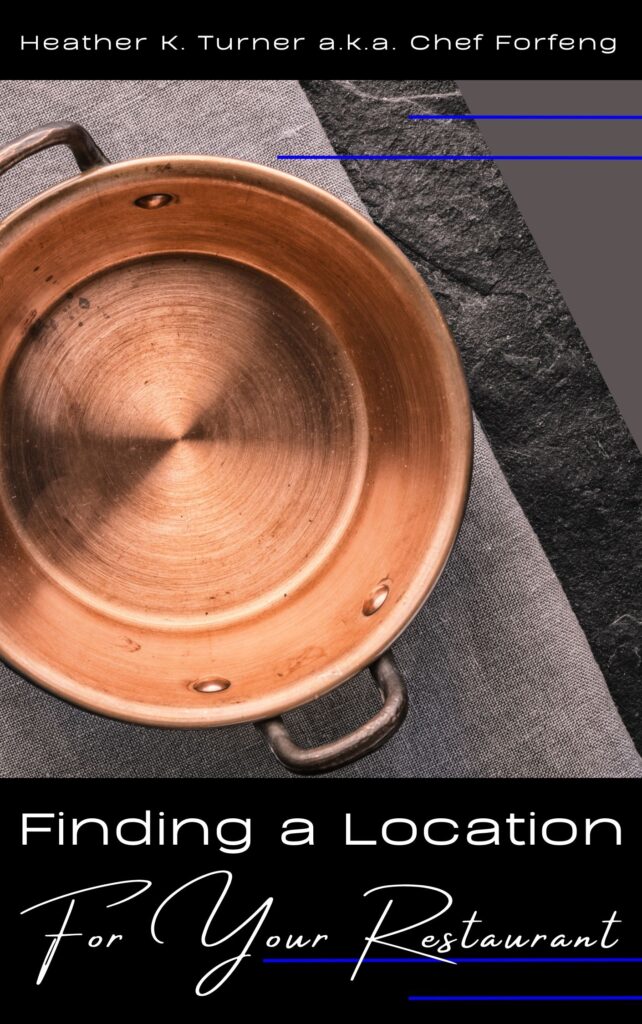by Heather T. | Jan 1, 2025 | Bed and Breakfasts, Business, Food, Lodging, Marketing, Observations, Operations, restaurants
With the new year and possibly some additional challenges to the hospitality industry coming ahead, restaurants and lodging may want to think about some additional alterative ways to generate income.
I look at it this way: Plan for the Best but be Prepared for the Worst. If you are a Monty Python fan, you might recognize “No one plans for the Spanish Inquisition”. If you are not, do a little search on YouTube for the full sketch.
Many businesses don’t expect hurricanes, tornadoes, floods, earthquakes or other disasters both natural and man-made, no one could have predicted the impact Covid had, no matter what side of the fence you sit on, it had a significant impact on the economy.
Something along those lines or other (aliens could take over the world, we really don’t know what’s out there in the universe, or there could be a solar flare, sadly even more realistic) could happen but the reality is, businesses should prepare, just in case. Again, Plan for the Best but be Prepared for the Worst (as a backup plan).
I advise businesses it doesn’t matter how well your business is doing. Never stop marketing and always be prepared. When you have a power outage for a couple of days, better to have a couple of gallons of water on hand than not. Think of this as having some extra water kicking around (just as a backup) and extra money in your pocket is never a bad thing to have.
For Lodging:
Staycations have been “in” for a while, but how many lodging establishments have actually created packages for them or created a marketing plan for them?
For Rooms: (If you have 6 rooms or more (or even less) but bookings are low:
- If you have extra rooms not regularly booked, consider offering them for monthly, quarterly, or longer-term rentals. Dedicated income is never a bad thing. Medical professionals, visiting doctors and nurses are having an ongoing time finding housing and they are great short term and longer term tenants.
- Office space or Co-working space. Massage therapists always seem to be looking for space rental (also something you can use in your advertising: massage therapist on site). I saw two “asks” in local Facebook forums just in the last couple of days.
- Inventory storage space for another local business and/or climate controlled storage space for rent.
- Studio space for artists (you could tie packages into an artist in residence).
- Counselors or therapist’s rental space.
- Nonprofit office space.
For Your Dining Room/Living Room/Other Space
- Rent out space as needed to photographers/videographers who may need space for photo/video shoots.
- Offer the space for local meetings or events. If the layout and setup is conducive to having a screen and projector setup available for meetings, consider buying a projector and screen. For under $300 you can purchase both for the needs of a smaller room, and if you rent them out to meetings even for $50 or less, you can quickly make your money back. Renting out a projector from a party planning business typically costs twice that. I’d recommend if you go this route and start doing a lot of meetings adding a backup projector to the mix. You can get refurbished older projectors affordably from Ebay and Amazon. Upsell it by offering coffee, tea and other refreshments or box lunches.
- Pop up shops for local crafters or indoor farmers’ market
- Consider the old style boarding house model, room and board for monthly or longer-term renters. Finding housing is at an all time need around the country and there are probably professionals who don’t have the time or desire to cook meals for themselves, plus in need of housing. Check your local zoning laws and state laws, but if your property is already a commercial business, this may just be getting another license for an additional type of food permit. In New Hampshire, a Bed and Breakfast license is $175 per year, a restaurant license for 25-99 seats is $350 a year. You may need some additional inspections or requirements but it might be worth looking into. If you have six rooms and rent two long-term or monthly at $50 a night, that generates about $1500 a month per room, or $36,000 a year for two. Is it worth it to you to cook an extra couple of meals per day and do some extra cleaning? Even with food and some extra time for laundry, something to chew on. Just like renting to a longer term renter, you would want to be selective of who you take in, but probably less trouble than some short-term rental guests who come from an online platform.
- During the day when the space is not being used, rent it out for yoga or mediation classes (again this could be a good advertising addon for your own business)
For Both Lodging and Restaurants:
- Rent out the kitchen for commissary kitchen space (when you are not using it). There are a lot of small food producers who are looking for commercial kitchen space to use. Connect with your local SCORE chapter, SBDC, or CWE offices and let them know, so they can let clients know you have space available. In New Hampshire for example, there are less than 5 commissary kitchen spaces for use by food producers, food trucks, small chef and catering companies and other food base companies like people who make dog biscuits, but have too much volume for a home kitchen. Cottage food laws may allow a dog biscuit business to bake at home in New Hampshire, but a personal chef making meal kits must use a commercially inspected commissary kitchen or other state inspected facility. In every state, there seems to be a lot less commissary kitchen space available than what the needs of small food businesses are looking for. I run into this frequently when working with food trucks and other small food independent food providers.
- Consider co-op buying with other local food type businesses. Many decades ago, when I was a chef on Cape Cod, we did this with some other local restaurants during the slow time of year. On Cape Cod in the busy seasons, we would do several hundred covers (dinners) per night on a weekend night, during the winter sometimes we would be lucky to do a dozen covers. The choice between shopping at a grocery store to keep the restaurant going was not an option because prices are higher than wholesale, so we banded together so we could make a broadliner’s (for those new or starting in the industry, a broadliner is a larger wholesale foodservice vendor) minimum order requirements which could be $400 per minimum order. B&Bs, hotels, bakeries, restaurants, cafes and caterers, as well as smaller food service businesses (like those mentioned above) could all take advantage of co-op buying to buy in bulk and keep costs down.
For restaurants:
For restaurants I wish I had a magic wand above and beyond renting out kitchen space for additional income to deal with high food costs and the ongoing employee shortage, but here are some ideas that you could try to bring in some extra revenue and try some things that are a little different to incentivize customers to patronize your establishment.
- This differs from just renting out kitchen space, more along the lines of renting out the full restaurant during any days you are not normally open. Consider the Restaurant-as-a-Service (RaaS) for other small businesses. Rent out your full facility out to chefs or starting entrepreneurs (suggested they have business insurance and ServSafe at a minimum) to test out limited time menus or food concepts. There is no lack of people who want to start a food truck and want to test out their menus in advance, or private chefs who may want to advertise their services more. You could use this as an additional marketing tool to create buzz for your business, and tie into additional cross promotions with any small business you might partner with.
- Offer Tasting Tuesdays (or any day of the week). Beer or Wine Tastings (on your closed days) with snacks or small plate meals. Coordinate with your beverage reps to help with promotions and products.
- Beer and wine flights have been a “thing” for awhile, but what about tea or coffee flights paired with desserts or other complimentary foods, like a tea flight paired with tea smoked fish and tea smoked vegetables and/or cheeses.
- Partner with food banks or pantries to donate excess or close to code food, reinforcing your community involvement. Helping your local community and being realistic here, it’s a good advertising hook, and if donating to a 501c3, a potential tax write off. You have 2 days left on 4 gallons of milk and business is slow and you will never use it all up in time…..
- Host cultural learning dining nights, a theme might be the food of India and have some education around the menu and the ingredients, history of the dishes, and more. A server can give an overview when guests are seated, and you can provide printed handouts or QR codes on menus or tabletop stands linking to more information about each dish, its ingredients, and preparation.
A few additional things I’ve seen getting traction in bigger urban areas and a few additional ideas as well.
Incentives for bring your own takeout containers to reduce your takeout container costs (plus it’s more eco friendly and good advertising hook.
Organize some interactive dining experiences, Dining in the Dark, for instance. Many years ago, my husband and I attended a benefit dinner where you ate a 4-course meal while blindfolded. The dinner benefited a New England Guide Dog organization; the organization covered all staff and food costs, and the restaurant kept income from drinks ordered before, during, and after the dinner. Prior to the dinner there was a cash bar and light hors d’oeuvres. The event was packed with a waiting list and I have to be honest, as an attendee, it was one of the most fun dinners I’ve ever had.
A few more:
Murder Mystery Dinners, Interactive Dessert Stations (if you have never seen anyone make ice cream with liquid nitrogen, it’s a blast to watch), escape room dining (diners have to solve puzzles to get access to drinks or courses), team building dinners, roll your own California/Nori rolls (with a demonstration and people to assist if needed). Themed dinners like time travel night (food from another era) or international cuisine night. Go whole hog and do a Star Trek themed night with foods that mimic foods found in Star Trek episodes (Gagh for example is made of serpent worms (in the show), it wouldn’t be hard to make pasta with a soy-based sauce that mimics the look (but not flavor 😊) of this traditional Klingon delicacy.) If you do a little search in Google or ChatGPT for food and drinks inspired by tv shows and movies, you came up with some fun ideas you could build whole themed nights around things like Pan Galactic Gargle Blaster (Hitchhiker’s Guide) – Gin, lemonade, and a touch of absinthe or licorice liqueur, Twin Peaks Cherry Pie – A classic diner-style cherry pie with a flaky crust and Red Rum Cake (The Shining) – A rich red velvet cake with dark chocolate icing and many more.
In the coming months, I’ll try to suggest some additional revenue streams and ideas for restaurants to experiment with as well.
Happy New Year!
A Toast to the Hospitality World filled with dedicated, hardworking people who love food and the industry. May the coming year be filled with happy customers and guests, good reviews, and fresh opportunities to make a profit.
by Heather T. | Nov 19, 2024 | Bed and Breakfasts, Lodging, Marketing, Operations, Starting a Business
 I’m looking forward to being at the Midwest Inns Association Innkeeping Conference the first week of December.
I’m looking forward to being at the Midwest Inns Association Innkeeping Conference the first week of December.
In advance of that I did a new version of my marketing checklist geared specifically towards Bed and Breakfasts that I hope some people might find helpful.
This list can be a guide for aspiring innkeepers OR for innkeepers that want to up their marketing game a little and maybe explore some things they haven’t thought of or tried prior.
This is meant to be a working document for innkeepers, so you can download this list in Excel, go the file menu and then to “download”. If you use Google docs/drive, you can also make your own copy to edit it by going to the file menu and then “make a copy”.
I know I promised to do “A questions to ask a Inn Broker“, and that’s coming next. In putting together questions, I thought it would be helpful to give some more explanation behind each question and it’s been turning from a short form blog post into a bit of a novel.
by Heather T. | Oct 1, 2024 | Bed and Breakfasts, Business, Operations
 The Importance of an Exit Strategy for B&Bs
The Importance of an Exit Strategy for B&Bs
I had written this up a few years ago. The Midwest Association of Independent Inns contacted me recently, asking for information, articles and other information I might have bookmarked, specifically for Bed and Breakfasts on exit strategies, to include in their newsletter. I found this in my archives and realized I had never shared it before.
While most of this is typical advice you can find in many exit strategy guides, I included some suggestions on how you can let guests and future guests know your inn might be, or is for sale, without being blatant about it which I have not seen in most checklists.
Our blog topic for a future post will be on questions to ask a business broker before engaging them to sell your business.
- Plan well in advance, ideally years before intended sale. The best time to start preparing for a sale is when you have the energy to start putting together the information for it, even if it is for years down the road.
- Regularly assess business and lifestyle goals to ensure alignment.
- Avoid burnout and declining property value, which can significantly affect the sale price. Keeping an eye on the interest rates and the market can give you a heads-up in advance about when it’s time to sell.
- An exit strategy may change over time, so revisit periodically. An exit strategy is not just about selling, but about preparing for your next phase of life. It allows you to maximize the value of your inn or B&B, and ensures a smooth transition for you, your staff, and your guests.
Establishing Goals
- Consider plans for the property (keep in the family, sell it outright, etc.) and discuss with family members if applicable.
- Evaluate personal career/lifestyle goals, including retirement plans or new ventures.
- Assess if innkeeping still meets your needs; consider if minor changes could reinvigorate your passion. Why did you get into innkeeping in the first place?
- Think about your ideal timeline for exiting and how flexible you can be. Goals should be SMART: Specific, Measurable, Achievable, Relevant, and Time-bound. Be honest with yourself about what you want and need, as this will guide your entire exit process.
Alternatives to Selling
- Hire managers or a management company to reduce your day-to-day involvement.
- Close the business, but keep the property if you have an emotional attachment to the building.
- Family succession requires careful planning and open communication, start sooner rather than later.
- Bring in partners to share responsibilities and potentially set up future buyout.
- Manage-to-own agreements can help transition to new owners over time.
- Leasing options allow you to retain ownership while stepping back from operations.
- These alternatives can provide flexibility and may be useful if market conditions aren’t ideal for selling.
- Each option has its own legal and financial implications, so consult with professionals before deciding.
Preparing to Sell
- Get financials in order; clean and up to date books are crucial for buyer confidence and accurate valuation.
- Prepare your property by addressing deferred maintenance and enhancing curb appeal. Even small fixes and improvements can make a huge difference when showing the property.
- Consider professional inspections to identify and address issues proactively.
- Prepare yourself mentally for the emotional process of selling and transitioning. For many innkeepers, their property has not just been their business but also their home of many years.
- Preparation can take months or even years, but it’s crucial for maximizing your inn’s value. Remember, potential buyers will scrutinize every aspect of your business, so attention to detail is key.
Valuing the Inn
- Use multiple tools like Capitalization Rate, Gross Revenue Multiplier, Price Per Guest Room**
- Consider hiring an appraiser for an objective valuation, especially for unique properties
- Understand that emotional value doesn’t always translate to market value
- Be prepared to justify your asking price with data and comparables. Valuation is both an art and a science. While formulas provide a starting point, factors like location, property condition, and market trends all play a role. Be realistic but don’t undervalue your years of hard work and goodwill.
** https://calculator.academy/cost-per-occupied-room-calculator/, https://www.cloudbeds.com/tools/adr-calculator/, https://www.siteminder.com/calculate-your-occupancy-rate/, there are many more if you browse Google for ADR, ALOS, RevPAR, GOPPAR, CPOR, NOI and more.
Marketing & Advertising
- Work with an experienced inn broker on a comprehensive marketing plan. (Questions to ask a broker coming next week)
- Advertise in industry-specific publications and venues where potential buyers look.
- Carefully consider how open to be about the sale to protect current business.
- Consider advertising on social media or listing your business on niche groups where a potential buyer could be waiting as well as state and local groups. Some states have robust listserve newsletters that go out to thousands of people every day. In New Hampshire and Vermont for example there are several dozen town and area ones https://lists.vitalcommunities.org/lists/lists as well as regional ones https://vitalcommunities.org/new-uv-lists/.
- Prepare a detailed prospectus highlighting the inn’s strengths and potential.
- Effective marketing can significantly impact your sale timeline and price. A well-crafted narrative about your inn’s history, unique features, and growth potential can attract serious, qualified buyers.
- On your website, consider adding a subtle section that speaks to the future of the business: “Interested in joining our journey? Get in touch to learn more about potential opportunities to be a part of our continued story.” This can draw in people who may want to invest or inquire about ownership, without having an public or overt “for sale” message.
- Consider you may have guests that might be interested in being innkeepers. While many innkeepers are reluctant to advertise that their B&Bs are for sale because they are afraid guests might be reluctant to book, keep in mind, being open to selling and subtly putting out there you are open to offers if a good one came along has paid off for some business owners.
A few ways an innkeeper could subtly suggest a property for sale to guests.
When speaking with guests, you could emphasize exciting future opportunities for the B&B without directly mentioning a sale. “We’ve built such a strong business here, and we’re excited about the possibilities for the B&B to grow and evolve in the future.” This plants the seed that the business could be taken over by someone who shares your passion for innkeeping, without openly discussing a sale.
In conversations or marketing materials, frame the business as a “legacy” that could be carried on by someone with fresh ideas. “We’ve loved being a part of this community for years, and we’re excited to see how the next chapter for this B&B unfolds.” This approach communicates that a transition could happen, but focuses on the continuation of the guest experience rather than the sale itself.
You can present the idea of potential partnerships or expansion opportunities without saying it’s for sale. “We’ve been thinking about how someone could bring fresh energy or ideas to take this place even further.” This potentially opens the door for guests or acquaintances to inquire if they’re interested, but doesn’t sound like you’re making a direct sales pitch.
When writing newsletters or posting on social media, highlight positive guest experiences and mention how valuable and rewarding running the B&B has been. Subtly hint that it’s an ideal lifestyle for someone looking to build on what you’ve created: “We’ve loved creating memories here for guests, and this B&B has become such a beloved part of the community. We’re excited to see how it continues to bring joy to so many.” This sends the message that it’s an established, well-loved business, which could attract attention from prospective buyers who may follow up privately.
The Sale Process
- Understand regional differences in the sequence of transactions.
- Be prepared for a potentially lengthy negotiation process. Many months and some times a year plus long process.
- Consider tax implications early and consult with a tax professional.
- Explore various financing options, including potential seller financing.
- The sale process can be complex and time-consuming. Patience and flexibility are key, as is maintaining the quality of your inn operations throughout the process. Remember, the deal isn’t done until the closing documents are signed.
Transition to New Owners
- Provide detailed operations manual and hands-on training if agreed upon.
- Help with staff transition (if applicable) to maintain continuity and preserve institutional knowledge.
- Help with vendor transition (if applicable) to maintain continuity. You might have guests that love your L’Occitane or Beekman 1802 amenities. Introduce them to your sales rep to make the transition easier if they choose to continue with them.
- Introduce new owners to key community contacts to support their success.
- Be prepared for emotional challenges of letting go; consider personal counseling if needed. I’ve talked to so many innkeepers who don’t realize how much of a heartbreak it can be to sell a business (and home) that they have put their hearts into, sometimes for decades.
- A smooth transition benefits everyone: you, the new owners, your staff, and your guests. While it can be emotionally challenging, a well-managed transition can preserve your inn’s legacy and set the new owners up for success.
Key Professional Help
- Inn brokers or consultants with specific experience in hospitality properties
- Accountants familiar with hospitality businesses and related tax issues
- Lawyers experienced in business and real estate transactions
- Appraisers with hospitality industry expertise, if needed for valuation or financing. The right team of professionals can make the difference between a stressful, protracted sale and a smooth, profitable transition. Their expertise can help you navigate complex issues, avoid pitfalls, and maximize your inn’s value.
Worth a read for more information about the following links. 8 Business Valuation Calculators from Small Biz Trends.
++2 of the calculators referenced in the original article are no longer online. The article doesn’t give all of the links to the calculators so including them below.
CalcXML
https://www.calcxml.com/calculators/business-valuation
EquityNet
https://www.equitynet.com/crowdfunding-tools/business-valuation-calculator.aspx
ExitAdviser
https://exitadviser.com/mob/value-calculator
BizEx
https://www.bizex.net/business-valuation-tool
Digital Exits
https://digitalexits.com/whats-your-business-worth/
Hadley Capital
https://www.hadleycapital.com/insights/business-valuation-calculator
MassMutual Financial Group
https://www.massmutual.com/financial-wellness/calculators/business-valuation-planner
National Life
https://www.nationallife.com/Financial-Calculators-Value-of-My-Business
by Heather T. | Dec 9, 2020 | Bed and Breakfasts, Blog, Marketing, Operations, Social Media
 About 4 years ago I had written a blog post about Planning Ahead for Your Bed and Breakfast Promotions and this ties into the new calendar I’ve put together (below) and your content scheduling, or you can adapt or just use one format or another. Here is the online spreadsheet from that post (don’t forget you can download it and it does have multiple tabs). Tips on downloading or copying if needed near the bottom of the post.
About 4 years ago I had written a blog post about Planning Ahead for Your Bed and Breakfast Promotions and this ties into the new calendar I’ve put together (below) and your content scheduling, or you can adapt or just use one format or another. Here is the online spreadsheet from that post (don’t forget you can download it and it does have multiple tabs). Tips on downloading or copying if needed near the bottom of the post.
At the beginning of this year with Covid hitting and B&Bs being closed or having a limited business, the big question was what to post, so I had designed this campaign with posting ideas https://betterwaytostay.com/campaign/. And the idea can still be used at any time.
I’ve had several questions from friends and other B&Bs if I was going to do the annual National and other Days of interest list that I do once a year compiled from a bunch of sources around the web. Since I had just finished next year’s calendar I am happy to share, but I also added some other tips (in the additional documents in the post) that might make posting and figuring out when to post for specials and other events (like Holidays) a bit clearer and hopefully easier.
It’s much easier to take about an hour at the beginning of the year, if not before, and develop at least a rough outline for your content calendar for the year and add to it (or subtract) as needed. Here are some content calendar ideas that I hope will help you start to develop a content calendar. The National Days is just a starter and I know every marketer under the sun pushes it, but it is admittedly a great “starting” point. I spent about 4 hours collating National, International Days and other Days of interest including as many food ones as I could find. This might be useful for restaurants as well looking for a few ideas to post. If you know of any I missed please let me know and I’ll add them in.
National and More Days for B&Bs (with some specific days as prompts)
National and More Days for B&Bs (no selections/prompts)
Calendar Example for a B&B. This is an example of a property going through the list and leaving the ones they might be interested in using for potential posts or blog or video posts. It doesn’t mean a property will do them, it just means a property found something interesting in the list, something that speaks to them (military family), a love of fun (Soylent Green Day or UFO Day for those with a sense of humor and love of Sci-fi), particular food days that resonate with things the B&B serves for breakfast, etc. Note this list is 11 pages pared down from 17.
Calendar Example for B&Bs with Specials. This is an example of preplanning your yearly calendar for posts and promotions that can be used stand-alone or in conjunction with the spreadsheet mentioned at the beginning of the blog. I only did the first couple of months but hopefully, you can get a good idea of how to go about adding information both for notes for yourself and scheduling posts for any ongoing specials or holidays you want to promote.
This is a PDF fillable calendar. (please download to fill) that you can fill in and print off or just print off and write in ideas (note please save it as a separate document or it may not save any inputted text). I would suggest making a checkmark next to the ones you’ve done, plus making any notes about engagement, likes, shares, and comments, these will help direct you in the following years if you want to do similar posts or promotions.
Content Calendar Sample Format. If you prefer a calendar type format instead of a spreadsheet or word document for figuring out your posting schedule you can use a format like this. There is no wrong way to do this, you find the format that works the best (and easiest) for you and go from there.
Blank Calendar-Sample Tracking. (I like to track likes, comments and shares on a seperate sheet, but you can also handwrite if that works for you (see below example). It helps if you note what you started with for each channel and ended with for each channel. Facebook January 1-352 Likes, January 31-386 Likes, etc. this will help you track progress and you can review quarterly to see whether what you are doing is actually working or not.
Content Calendar with Handwritten Notes *note circles mean a link to the inn’s website main or sub-page or blog post on the website.
Something some B&Bs don’t do is link to their website or a specific page on their website in posts at least once a week. If you are wondering about conversions and clicks from social media (and why you are not getting many or any) it’s something you need to look at.
I was talking to an innkeeper earlier this week and she was complaining that while her posts on Facebook were getting a lot of engagement, she had not gotten a single click through from Facebook in more than 3 months according to her Google Analytics. Not one of her over 100 posts had a link to the website in the post body itself. People tend to forget once someone has liked a page, the only link (unless you remind them in the posts that show up in their Facebook personal feed) to your website is back “on” the business page itself. People will not double click to search for the link.
This is How to make a copy or download a document (for reference if you want to use anything mentioned here offline or copied digitally)
I’d also recommend checking out You Need This 2021 Marketing Calendar [Free Templates] and his spreadsheet of helpful links and dates which does have things like the NHL Winter Classic, PGA Tournament of Champions, and the Grammy’s dates if these are things that you want to tie into your marketing but does not have the majority of the food dates that mine does. My calendar has most of the same information plus food but is missing sports and TV related events.
If you find any of the information above useful, we always appreciate a follow/like on our Facebook page (we don’t post a ton there as I personally prefer being able to chat with people but I am on FB pretty much all day during the week and your welcome to message me anytime) but would appreciate a page like and happy to reciprocate if you let us know your business page link, or you can connect on Linkedin or Twitter or just come say hello .
If you know someone that can use some social media help and would like to be able to learn it and manage it themselves (that’s what we do, we teach it) instead of paying an external company to manage it, please give me a call (860-326-0721) or email me, we are happy to help. Cheers and Happy Holidays. Please stay safe out there!
by Heather T. | Sep 30, 2020 | Bed and Breakfasts, Lodging, Marketing, Opinion

COVID is an issue with lodging, whether you believe it is a real threat or not. Studies by industry experts have shown that a large majority of people traveling take it seriously and are concerned for the cleanliness and sanitation of a facility.
Recent news highlights that many hotels and homestays as well are not paying attention to standards even though they tout they are.
Where does this leave other legal lodging properties?
It leaves us with a golden opportunity to capture the market of people who are leery of traveling and are very concerned for their safety. While most B&Bs and other lodging properties are making a point somewhere on their websites of mentioning what they are doing to keep guests safe, Some are not. That needs to be fixed, especially if your property is implementing additional safety standards. Your potential guests won’t take the time to inquire, they will just go elsewhere.
 I did want to point out some things I am seeing that can be improved and adjusted with many of the properties that ARE advertising what they are doing. One of the biggest pitfalls I am seeing is the use of pop-up boxes. Pop-up boxes are great, I love pop-ups, BUT not so great for advertising what you are doing for cleaning and safety standards if that is the ONLY place you are letting guests know about it. I am seeing a lot of properties have these boxes, but nowhere else on their site are they talking about the additional steps they are taking.
I did want to point out some things I am seeing that can be improved and adjusted with many of the properties that ARE advertising what they are doing. One of the biggest pitfalls I am seeing is the use of pop-up boxes. Pop-up boxes are great, I love pop-ups, BUT not so great for advertising what you are doing for cleaning and safety standards if that is the ONLY place you are letting guests know about it. I am seeing a lot of properties have these boxes, but nowhere else on their site are they talking about the additional steps they are taking.
As a guest, I may (or may not) bother to read the popup, once it’s closed, it’s gone. What if I have questions? What if I did want to now read it but now can’t do so because I’ve closed the pop-up? I am not going to search and I probably won’t bother to inquire, I’ll go elsewhere. I’d add the pop-up boxes that go on for over a page, the ones with the fancy script that’s impossible to read and the text that’s font size 6 where even with a magnifying glass it’s hard to read as ones that are not helping to properly let guests know what your property is doing. 2 out of every 3 properties with pop-ups only have the information on the pop-up. I’ve been tracking this as I look at dozens of property websites a week.
As a guest, and in normal times I am one frequently, I want to know what a property is doing to keep me safe. If I had to travel now, I would definitely stay in a B&B, with the caveat that I can find easily what the property is doing to keep me (and other guests, and themselves) as safe as possible.
While I do agree we don’t want to go overboard, think of how a guest or potential guest views your site to potentially make a reservation (looking at your Google Analytics would help as well), they land on your home page (and may not scroll down below the fold if that is where you have your safety information listed). Where else if anywhere is your safety information listed? Is it a separate page? Do people know to go there, ie is it under the same drop-down tab as your rooms? Does it have a brief mention on your rooms pages or your policies page or your reservations platform? Have you posted about it on Facebook or other social media? How many times? If it was only once, how about mentioning it every few weeks? Have you taken advantage of Tripadvisors ability to let guests know what you are doing additionally? What about Yelp? What about your Google My Business listings?
If your property is taking the extra time and added expense to enhance your cleaning and safety standards, please let your guests know about it. They want reassurance and you can advertise that you care, but you need to let them know you do in ways they will actually see and remember.
by Heather T. | Apr 28, 2020 | Bed and Breakfasts, Marketing, Opinion, Social Media
 If you just want the Instagram hack, skip to the bottom links 🙂
If you just want the Instagram hack, skip to the bottom links 🙂
I’ll be the first one to admit, I’m not terribly fond of Instagram, one of the primary reasons being it’s smartphone-based, and I really don’t like my cell phone much.
To me it’s useful, it’s a tool I use for taking bad pictures (an iPhone 6 doesn’t take the best photos), getting texts from family and a few friends (mostly because I don’t give the number out much) and to check email in a pinch. Oh and I also use it a lot for Google maps and navigation.
What I don’t want is to be tied to it 24/7 like so many of my friends and family are, checking the damn thing several dozen times per hour. I am already on a computer working 12+ hours a day usually. Downtime is a good book, not checking Pinterest boards or scrolling through social media feeds.
One of the other reasons I am not fond of Instagram and this from a purely marketing perspective as well as a time perspective, is most of the photos I have are desktop-based or I take photos with a digital SLR camera, which I love, and so most photos end up on my main computer. To post anything to Instagram by smartphone I would have to transfer them by connector cord or digitally and that seems like a waste of time, add in the fact that I have a million thumbs and it takes me 5 minutes to type in a text message in the first place, Instagram is not my fave rave.
About a year and half ago I came across a blog post talking about using Instagram from the web and was overjoyed, a way around having to post by phone! The hack was only for Google Chrome and I’ve been showing other people how to do it since then. It came up recently asking if I knew if you could post via computer with other browsers and I was not aware of how to but supposed you probably could.
With that in mind. I messed around online a bit and I found you can post with Firefox and Microsoft Edge. I would imagine you can with a Mac, but I don’t have one to test it on but did find this, if this is current enough and works, if anyone tries it please let me know. https://www.howtogeek.com/howto/12663/view-mobile-websites-in-windows-with-safari-4-developer-tools/ . I did not try it on Microsoft Explorer because quite frankly Explorer is not the safest browser and if you are still using it I’d encourage a switch to pretty much any other one out there.
Using Instagram from the web does have downsides, you can’t post videos, you can’t save drafts and you don’t have access to many of the bell and whistle options in the back-end of mobile-based Instagram and you can’t run ads on it unless you are doing it connected to Facebook. The plus side is you can set up an Instagram account this way, set up your profile, add a profile picture, follow people, comment and like posts and direct message people, PLUS you can post pictures directly to Instagram from a desktop/laptop-based browser.
If you do want some options for scheduling Instagram posts and keep in mind I get biased by price (I prefer free) but I also don’t like software that glitches easily or often or customer support that is non-existent or takes forever to get back to you (Hello Facebook!). So with that in mind……
Buffer (Free and Paid)-I LOVE Buffer
Later (Free and Paid)-tried it more than a few times, glitched quite a bit
Hootsuite (Free and Paid)-tried it more than a few times, glitched quite a bit and I find the interface not the friendliest
Tailwind (Paid)-very good for Instagram and Pinterest
Posting cheat sheets in PDF:
Instagram from a web browser in Firefox
Instagram from a web browser in Google Chrome
Instagram from a web browser in Microsoft Edge
Have fun! And if you are a Bed and Breakfast reading this, don’t forget you can participate in the ALP Better Way to Stay Get Heads In Beds Initiative starting May 1, 2020. More information at https://betterwaytostay.com/campaign/






 I did want to point out some things I am seeing that can be improved and adjusted with many of the properties that ARE advertising what they are doing. One of the biggest pitfalls I am seeing is the use of pop-up boxes. Pop-up boxes are great, I love pop-ups, BUT not so great for advertising what you are doing for cleaning and safety standards if that is the ONLY place you are letting guests know about it. I am seeing a lot of properties have these boxes, but nowhere else on their site are they talking about the additional steps they are taking.
I did want to point out some things I am seeing that can be improved and adjusted with many of the properties that ARE advertising what they are doing. One of the biggest pitfalls I am seeing is the use of pop-up boxes. Pop-up boxes are great, I love pop-ups, BUT not so great for advertising what you are doing for cleaning and safety standards if that is the ONLY place you are letting guests know about it. I am seeing a lot of properties have these boxes, but nowhere else on their site are they talking about the additional steps they are taking. If you just want the Instagram hack, skip to the bottom links 🙂
If you just want the Instagram hack, skip to the bottom links 🙂
